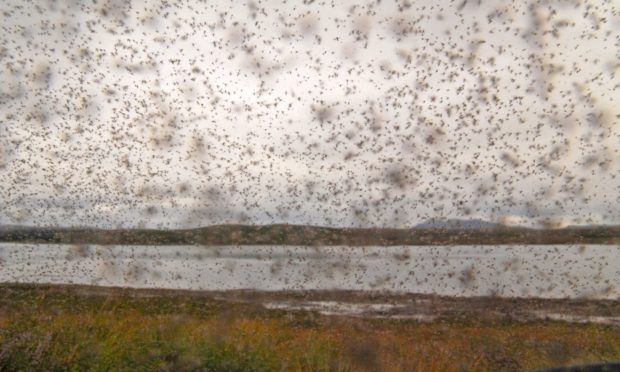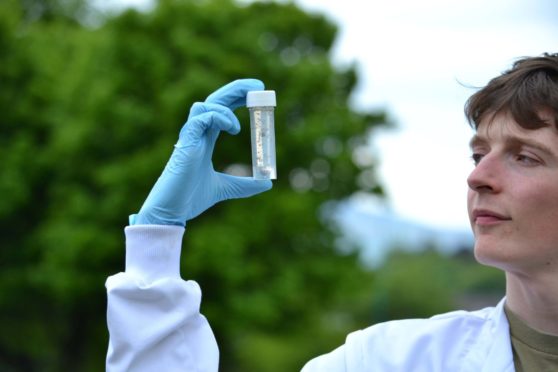Midges. It makes you itch just thinking about them.
And hiker Colin Ibbotson is not likely to ever forget the time he was swarmed by thousands of the blood-sucking beasties while in the Highlands – after his video of the skin-crawling moment went viral.
Colin Ibbotson was faced with the torrential “cloud” at Loch Monar, at the head of Glen Strathfarrar – on Tuesday.
The 48-year-old took to Twitter to share the scene, describing how the biting beasties were covering his body and backpack.
The video was retweeted by Scottish Mountain Rescue and has clocked up nearly 230,000 views and 1,400 retweets.
Midges! Loch Monar this morning #5DegreesWest pic.twitter.com/o0RZs4Edbu
— Colin Ibbotson (@Tramplite) July 27, 2021
Fortunately for Mr Ibbotson he was dressed in long clothing, but in the video he says: “I am wearing every bit of protection I’ve got. I’ve got Smidge on, I’ve got a head net on and I’m still taking a lot of bites – around my ankles, even though everything is sealed. Some are getting in. The Smidge does work. It’s just sheer numbers.
“I’ve seen a lot of midges before but this is probably a different level. This is ridiculous.”
The area is damp and boggy – perfect for the midges to lay eggs in.
What you need to know about midges
Dr Alison Blackwell, who runs the Scottish Midge Forecast, has provided some handy information for anyone planning to head out this summer.
Q. What time is most convenient for midges to come out?
A. Midges are most active in low-light conditions, so dawn and dusk. They avoid bright sunshine.
Q. Why are midges such a nuisance?
A. The female midges need a bloodmeal to mature their eggs. They use odour cues from large mammals to find their prey – so carbon dioxide in breath and other body odours. The Highland midge (Culicoides impunctatus) is the most abundant of about 40 species in Scotland and prefers to feed from large mammals – so cattle, deer, sheep, horses and people.
Q. What conditions are ideal for midges?
A. Overcast, still conditions – tend not to fly in wind speeds above 7mph.
Q. What are midges attracted to and how do you get rid of midges?
A. Midges are attracted to CO2 in breath, other body odours, plus body heat, movement and dark colours. You can’t get rid of midges so easily as they are important to the ecosystem. Adults are fed on by some species of birds & bats and larvae help break down decomposing organic matter in the soil.
Q. What is the timeline you expect for midges to stick around for?
A. There are always two generations, starting in May, with peaks in early June and six weeks after that. If we have a warm summer (like now) are likely to have a third generation emerge in early September.
Dr Blackwell, is director of Dundee-based APS Biocontrol Ltd – makers of anti-midge repellent Smidge, which sold a record 63,000 cans in June.

